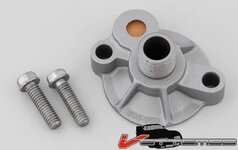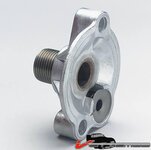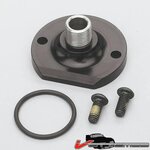Jeez, I retract my above statement---I think I have it backwards!!
Up until the filter bypass opens, all the oil circulates through the engine. When the bypass does open at the set pressure, assuring that the engine has enough oil pressure for it's lubrication needs, then some of the oil goes through the filter. Either way, the oil filter is on a side loop, not in line, on a Chevy engine so not all the oil goes through it all the time. And if the filter becomes plugged, the engine still gets full lubrication
Man, I'm sorry--- Now I've gone & confused myself as well. I should just shut the fuck up and let someone who really knows answer.
I learned this on an old Chevy truck 6-cylinder. It had the big ol' canister filter, with rubber lines from the block. The oil filter was basically an accessory. It had a small orifice to restrict flow and keep the block pressured up. I replaced it with a spin-on filter adapter and my oil pressure dropped to about 2 PSI at idle. The oil was short circuiting through the filter because it had less resistance than through the oil passages of the engine. I found a pressure valve I could put in the filter feed line which opened at about 15 PSI and all was OK. As far as I have known, the V8 blocks have the same set-up. But fuckin-A I could be wrong. Now I want to know too.



